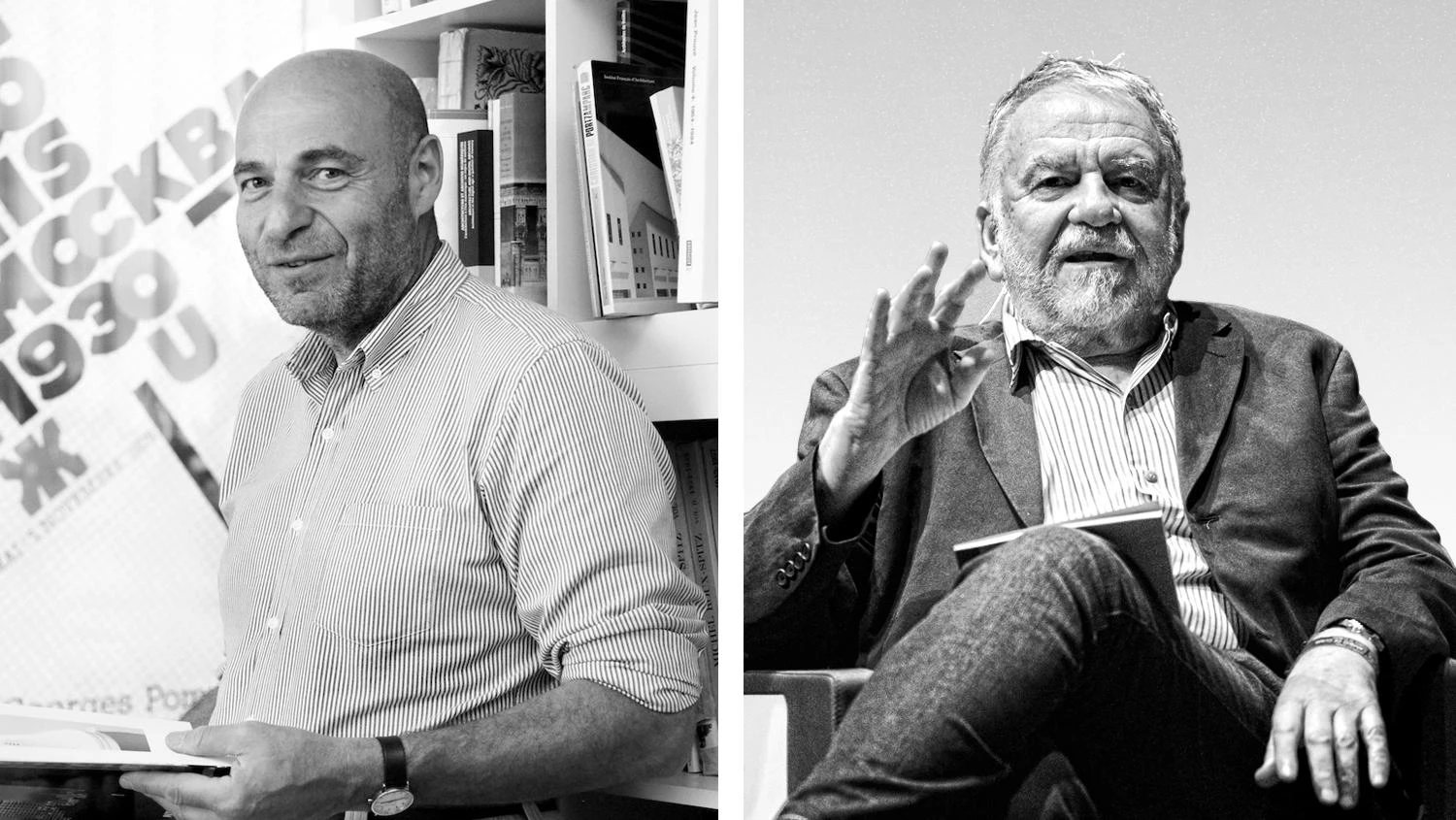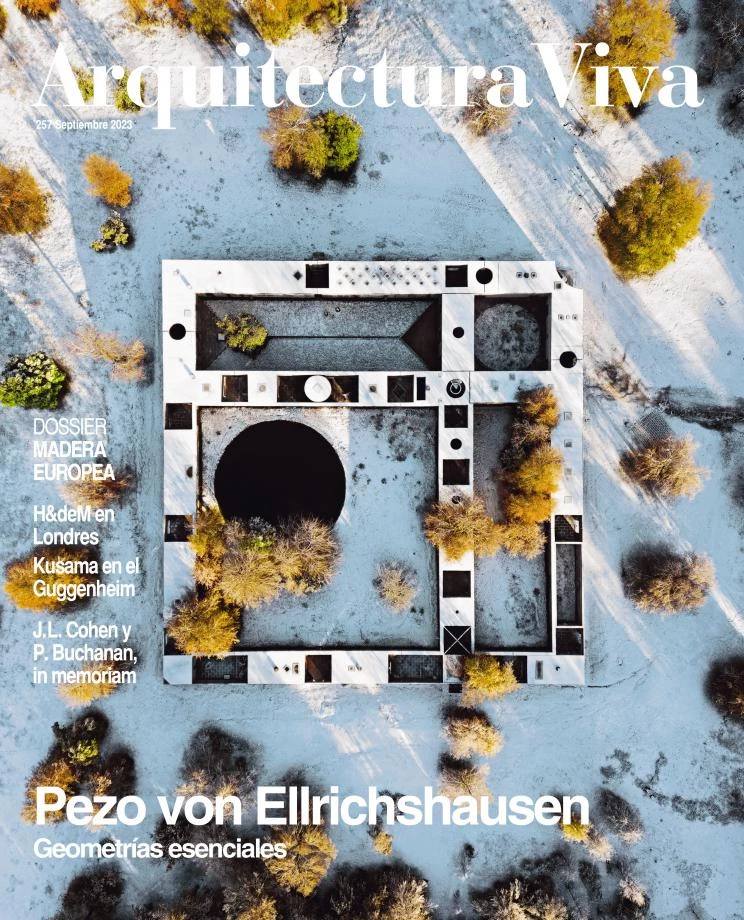
De izquierda a derecha, Jean-Louis Cohen y Peter Buchanan
August was more cruel than April. The suffocating heat and the fires burned up media covers, but the heart of architecture froze at the news of the death of Jean-Louis Cohen and Peter Buchanan, a Frenchman and a Briton who contributed to the discipline through their writings: the historian Cohen, a central figure in architectural culture, died on 7 August, at his residence in Ardèche, of an allergic reaction to a bee sting; and the critic Buchanan, who quietly slid from a position of influence into the margins, passed away on 23 August in a London care home, after a progressive deterioration caused by terminal cancer. Both trained as architects but will be remembered for their books, articles, and exhibitions, which have been instrumental in the documentation of modernity and in the mapping of the contemporary scene.
Born in Paris in 1949, into the privileged ambience of an intellectual aristocracy, both Jewish and communist, Cohen placed his infinite curiosity and inexhaustible erudition at the service of his political preoccupations and aesthetic convictions, and was a pioneer in exploring subjects like World War II architectures or what he called ‘américanisme,’ the influence of US construction on the European avant-gardes. It was precisely my El País article on his major 1992 exhibition ‘Américanisme et modernité’ that I chose to represent him in the book Maestros de escritura, but a reasonable alternative would have been ‘Architecture in Uniform,’ the admirable 2011 show he put together at the CCA in Montreal. The sheer breadth of his knowledge and interests – captured in our magazines with texts on Mies or Prouvé, as well as Siza or Office, whose monographs he prefaced, and even on concrete, to which he devoted a book – led him to write an architectural history of the 20th century with the odd title The Future of Architecture Since 1889, based on courses he had given at New York University since 1994, and which I reviewed criticizing the exaggerated protagonism of all things French, inevtiable perhaps in someone who curated several exhibitions on Le Corbusier, including the MoMA one of 2013, which delved into his landscaping dimension rather contrivedly – though not to the preclusion of forming the basis of an AV monograph – and defended the master in the face of all the revisions he was being subjected to on account of his links to Vichy.
Wed to the urban housing sociologist Monique Eleb, who died in May, the historian also tackled contemporary themes, from events like 9-11 and the Ukraine war, on which he wrote in Arquitectura Viva, or projects on active architects, such as his unfinished multi-volume catalog of the drawings of Frank Gehry or what would be his final exhibition, devoted to Paulo Mendes da Rocha and inaugurated in June in Porto. That same month found us together at a Parisian seminar on ‘Le rêve européen,’ where Jean-Louis disapproved of my laudatory mention of the Schuman Declaration of 1950, in line with his view of the European Union as a mere product of the Cold War; a cordial discrepancy he reiterated days later when he sent me the text of his lecture, with a note in Spanish that this consummate polyglot ended with a wish: “It would be great if we could one day have a serious debate on the political history of Europe and the political legacy of the Cold War.” This debate will never come to pass but the theoretical and historical work of Cohen will remain present in the architectural and ideological conversation of us all. His close friend since youth, François Chaslin, described him to Isabelle Regnier of Le Monde as “une falaise intellectuelle,” and indeed the oeuvre he leaves behind is of a grandeur and solidity that is intimidating. His last article in Arquitectura Viva, a year ago, was about the uses of history for architects, and this is perhaps his most fertile legacy, because we will read him over and over again for a long time to come.
Buchanan for his part was born in Malawi in 1942, but after studying in Cape Town he settled in London to make his way as an architect and eventually as a journalist, becoming the soul of The Architectural Review in the 1980s. From there he promoted Spanish architecture, acquiring an intimate familiarity with the professional landscape of Madrid and Barcelona and collaborating with AV and Arquitectura Viva since the latter’s launch in 1988: to give an idea of how prolific he was, it suffices to point out that by 1995 he had published in them more than two dozen texts, both on the Spanish and the world architectural scene. When the Review was bought by a large company in 1992 and its editorial staff moved from the small cozy headquarters at Queen Anne’s Gate to a huge office shared by numerous publications, Peter made the decision to quit, working first for his admired Renzo Piano in the editing of the five volumes of RPBW’s complete oeuvre, published between 1993 and 2008, and later getting by with writing assignments and lectures.
He had spoken at our very first seminar, held in Madrid in 1989 with William Curtis, Alex Tzonis & Liane Lefaivre, and Tom Reese, and frequented Spain up to the Pamplona congresses of 2012 and 2016, interviewing Anna Heringer and Solano Benítez in the former and Dietmar Eberle and Winy Maas in the latter, always demonstrating an exceptional ductility that did not stop him from sprinkling his essays with references to the architecture of Piano, a reference as important in his lifework as the ecological conscience that inspired his final pieces. The one that would wrap up his three decades with us appeared in December 2021, and in it he joined Kenneth Frampton and Vittorio Magnano Lampugnani in censuring the architectural canon put forward by The New York Times. Removed from influential circles but tenacious in his convictions, and increasingly solitary, he spent the twilight of his life in the nursing home where he breathed his last. He informed me about his illness in March, requesting a full list of his articles and the contact details of Fernández Alba, Moneo, and Navarro Baldeweg, people he considered pillars of an architecture he was so instrumental in promoting, so that he could write to them in what amounted to a cérémonie des adieux. With me it was by phone, and I was glad to learn, through Renzo Piano, that Shunji Ishida – whom he had befriended during the Kansai years – was able to visit him early in August, a month which turned out to be cruel for architecture and for memory.






